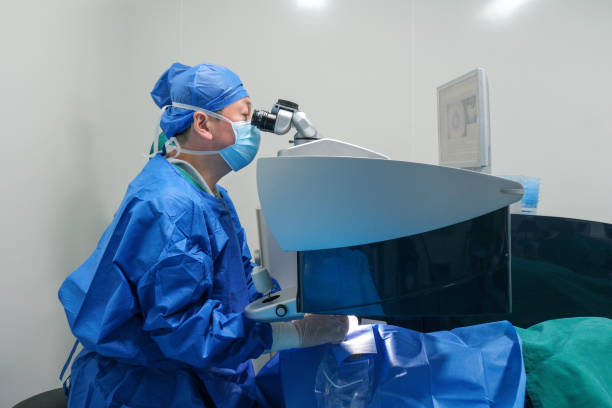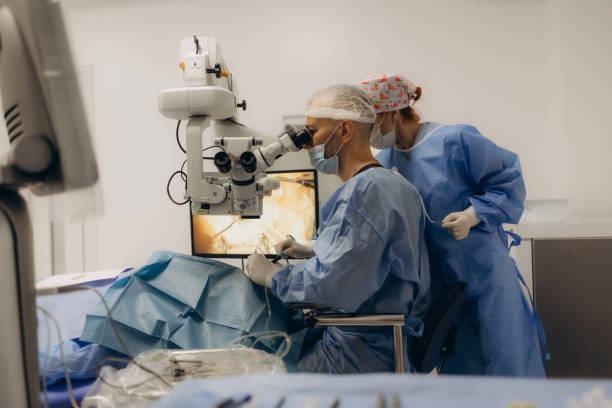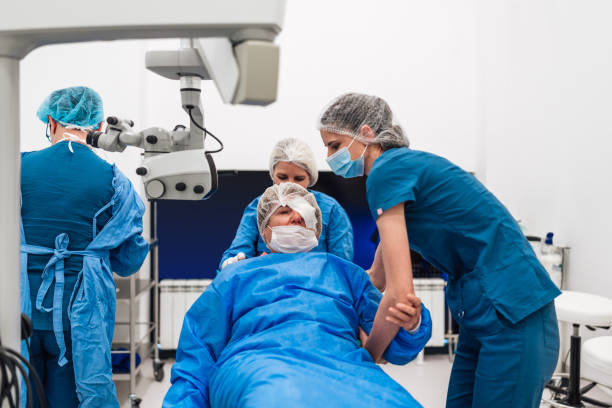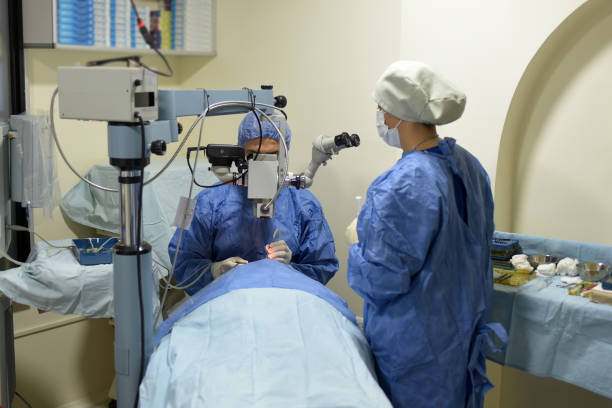Introduction: See the World Clearly Again
Are you tired of relying on glasses or contact lenses every day? Vision correction surgery might be the solution you’ve been waiting for. These popular procedures can improve your eyesight and give you the freedom to enjoy daily life without the hassle of corrective lenses.
In this easy-to-follow guide, you’ll learn everything you need to know about vision correction surgery. We’ll cover what it is, who can benefit from it, the different types of procedures, the average cost, and what to expect before, during, and after surgery. If you’ve ever dreamed of clearer vision without glasses, keep reading to find out if this life-changing option is right for you!
What Is Vision Correction Surgery?
Vision correction surgery is a medical procedure that reshapes your cornea—the clear, front part of your eye—to improve how your eyes focus light. When the cornea is not shaped correctly, it can cause blurry or distorted vision.
These surgeries are designed to correct common eye problems, helping you see more clearly without glasses or contacts. They can treat the following conditions:
- Nearsightedness (Myopia) – You can see things up close, but distant objects look blurry.
- Farsightedness (Hyperopia) – You can see things far away, but nearby objects appear blurry.
- Astigmatism – Your vision is blurry or distorted at all distances due to an uneven cornea.
- Presbyopia – A natural part of aging where it becomes harder to see things up close.
Vision correction surgery can be life-changing for many people, offering sharper sight and more freedom in everyday life.

Types of Vision Correction Surgery
1. LASIK (Laser-Assisted In Situ Keratomileusis)
LASIK is the most popular type of vision correction surgery. During the procedure, a special laser reshapes your cornea to help your eyes focus better. This can fix nearsightedness, farsightedness, and astigmatism.
Benefits:
- Quick recovery time
- Minimal or no pain during the procedure
- Many people notice better vision right away
Drawbacks:
- Not everyone is a good candidate
- Dry eyes after surgery are common and may last for a few weeks
LASIK is a trusted option with a strong track record. To learn more, visit the American Academy of Ophthalmology.
2. PRK (Photorefractive Keratectomy)
PRK is a type of laser eye surgery that works like LASIK but with one key difference—no flap is cut in the cornea. Instead, the doctor gently removes the outer layer of the cornea, then uses a laser to reshape the surface underneath. Over time, the outer layer grows back naturally.
Great For:
- People with thin corneas who may not qualify for LASIK
- Athletes or those who play contact sports, since there’s no risk of a flap shifting
Considerations:
- Healing takes longer compared to LASIK
- Some discomfort or blurry vision is normal during the recovery period
PRK is a safe and proven option, especially for those who aren’t ideal candidates for LASIK.
3. SMILE (Small Incision Lenticule Extraction)
SMILE is a newer type of laser eye surgery that’s less invasive than LASIK or PRK. Instead of creating a large flap, a laser makes a small incision and removes a thin piece of tissue called a lenticule from inside the cornea. This changes the shape of the cornea and improves vision.
Advantages:
- Lower chance of dry eyes after surgery
- Quick recovery with less discomfort
- Smaller incision means less disruption to the eye’s surface
Limitations:
- Not available at all clinics or eye centers
- May not be the best option for every type of vision problem
SMILE is gaining popularity as a safe and effective alternative to traditional laser eye surgeries.
4. Implantable Lenses (Phakic IOLs)
Implantable lenses, also known as Phakic Intraocular Lenses (IOLs), are placed inside the eye to correct vision. Unlike LASIK or PRK, this procedure does not change the shape of the cornea. Instead, the surgeon inserts a special lens between the natural lens and the cornea. Think of it as having a permanent contact lens that stays in place.
Best For:
- People with very strong prescriptions that can’t be corrected with laser surgery
- Individuals who are not good candidates for LASIK or PRK due to thin corneas or other eye conditions
Points to Know:
- It is a more invasive procedure than laser surgeries
- Recovery time may be longer, and follow-up care is important
Implantable lenses can offer clear, lasting vision for those who need a different solution than laser eye surgery.
5. Refractive Lens Exchange (RLE)
Refractive Lens Exchange, or RLE, is a vision correction surgery that works much like cataract surgery. In this procedure, your eye’s natural lens is removed and replaced with a clear, artificial lens. This new lens helps you see better and reduces the need for glasses.
Ideal For:
- Adults over 40 who have presbyopia (age-related trouble seeing up close)
- People who also have early signs of cataracts or want to prevent them
Things to Think About:
- RLE usually costs more than LASIK
- Recovery can take longer compared to laser eye surgeries
RLE is a great option for older adults who want long-term vision improvement and protection against cataracts.
Am I a Good Candidate for Vision Correction Surgery?
Not everyone is a match for vision correction surgery, but many people are. You may be a good candidate if you:
- Are 18 years old or older
- Have had stable vision for at least 12 months
- Have healthy eyes with no serious conditions
- Do not suffer from severe dry eyes or ongoing eye infections
Some medical conditions—like diabetes, autoimmune diseases, or certain medications—can affect how your eyes heal after surgery. That’s why it’s important to talk with your eye doctor. They’ll check your eyes and medical history to help you decide if this type of surgery is right for you.
How Much Does Vision Correction Surgery Cost?
Costs vary based on the type of surgery, the surgeon, and where you live. Here’s a general idea:
| Surgery Type | Average Cost (Per Eye) |
|---|---|
| LASIK | $2,000 – $3,000 |
| PRK | $1,800 – $2,500 |
| SMILE | $2,000 – $3,500 |
| Implantable Lens | $3,000 – $5,000 |
| RLE | $3,500 – $6,000 |
Note: Insurance usually doesn’t cover these procedures because they are elective.
Some clinics offer financing plans or monthly payment options.

What Happens During the Procedure?
Each surgery is a little different, but here’s what you can usually expect:
Before Surgery
- Eye exam and vision tests
- Discussion of your options
- Stop wearing contacts for a few days before the procedure
During Surgery
- Numbing eye drops are used
- Procedure takes about 10–30 minutes
- You’ll be awake but won’t feel pain
After Surgery
- You’ll need someone to drive you home
- Vision may be blurry at first
- Follow all aftercare instructions closely
Recovery and Results
Most people start to see clearer vision within 24 to 48 hours after surgery. However, full recovery can take several weeks as your eyes adjust and heal. During this time, it’s normal to experience some mild side effects, such as:
- Dry eyes – Your eyes may feel gritty or uncomfortable
- Glare or halos at night – Lights may look fuzzy or have a glow around them
- Light sensitivity – Bright lights may bother your eyes more than usual
These symptoms usually improve as your eyes continue to heal. It’s important to follow your doctor’s care instructions and attend all follow-up visits. This helps ensure the best results and allows your doctor to track your healing progress.
Pros and Cons of Vision Correction Surgery
Pros:
- No more glasses or contacts
- Quick recovery time
- Long-lasting results
- Boosted confidence
Cons:
- Possible side effects
- Not everyone is a candidate
- Can be expensive
Choosing the Right Surgeon
Your results depend a lot on your surgeon’s skill. Look for:
- Board certification
- Years of experience
- Positive patient reviews
- Advanced technology
Ask for a consultation and don’t be afraid to shop around. A good surgeon will answer all your questions.
Is Vision Correction Surgery Safe?
Yes, it’s considered safe when done by a trained professional. According to the National Eye Institute, most people are happy with their results. Serious complications are rare, but all surgeries carry some risk.
Tips for a Smooth Experience
- Follow your doctor’s advice before and after surgery
- Take all medications as prescribed
- Avoid rubbing your eyes
- Use lubricating drops if needed
- Attend all follow-up visits

FAQs About Vision Correction Surgery
Q: Is it painful?
A: No. You may feel pressure, but not pain during the procedure.
Q: Will I need glasses afterward?
A: Some people still need reading glasses as they age. Your doctor can help set expectations.
Q: Can it be reversed?
A: Most surgeries are not reversible, but touch-ups or enhancements are sometimes possible.
Conclusion: Is It Time to Change the Way You See the World?
Vision correction surgery can be life-changing. Whether you’re tired of foggy glasses or just want to wake up seeing clearly, there’s a solution out there for you. The key is to do your research, talk to a trusted eye doctor, and pick the procedure that fits your needs.
👁️ Ready to take the next step? Schedule a consultation with an eye surgeon near you and start your journey to better vision today!
We want to hear from you!
Have you had vision correction surgery or are you thinking about it? Share your experience or questions in the comments below!

